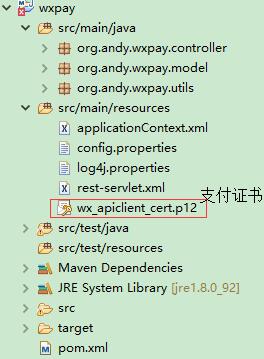本文实例讲述了php从数据库查询结果生成树形列表的方法。分享给大家供大家参考。具体分析如下:
本代码可以从数据库读取数据生成一个类似于windows的资源管理器的树形列表
?
|
1
2
3
4
5
6
7
8
9
10
11
12
13
14
15
16
17
18
19
20
21
22
23
24
25
26
27
28
29
30
31
32
33
34
35
36
37
38
39
40
41
42
43
44
45
46
47
48
49
50
51
52
53
54
55
56
57
58
59
60
61
62
63
64
65
66
67
68
69
70
71
72
73
74
75
76
77
78
79
80
81
82
83
84
85
86
87
88
89
90
91
92
93
94
95
96
97
98
99
100
101
102
103
104
105
106
107
108
109
110
111
112
113
114
115
116
117
118
119
120
121
122
123
124
125
126
127
128
129
130
131
132
133
134
135
136
137
138
139
140
141
142
143
144
145
146
147
148
|
<?php
/* Here are the database definitions (for Solid) that i use in this code.
* It should not be hard to adapt it to another database.
*/
/*
CREATE TABLE dirent_types (
id INTEGER NOT NULL,
icon VARCHAR(50),
name VARCHAR(50),
PRIMARY KEY(id)
);
INSERT INTO dirent_types VALUES(1, 'folderclosed', 'Directory');
INSERT INTO dirent_types VALUES(2, 'document', 'File');
CREATE TABLE directory (
id INTEGER NOT NULL,
parent INTEGER REFERENCES directory(id),
name VARCHAR(200),
icon VARCHAR(50),
type INTEGER REFERENCES dirent_types(id),
url VARCHAR(200),
PRIMARY KEY(id)
);
DROP INDEX directory_idx;
CREATE UNIQUE INDEX directory_idx ON directory(parent, name);
CREATE SEQUENCE dirent_id;
"CREATE PROCEDURE insert_dir_entry
(name VARCHAR, parent INTEGER, type INTEGER)
RETURNS(id INTEGER)
BEGIN
EXEC SQL WHENEVER SQLERROR ABORT;
EXEC SEQUENCE dirent_id.NEXT INTO id;
EXEC SQL PREPARE c_insert
INSERT INTO directory
(id, parent, type, name)
VALUES(?, ?, ?, ?);
EXEC SQL EXECUTE c_insert USING (id, parent, type, name);
EXEC SQL DROP c_insert;
END";
CALL insert_dir_entry('My Computer', NULL, 1);
CALL insert_dir_entry('Network Neighbourhood', NULL, 1);
CALL insert_dir_entry('lucifer.guardian.no', 2, 1);
CALL insert_dir_entry('rafael.guardian.no', 2, 1);
CALL insert_dir_entry('uriel.guardian.no', 2, 1);
CALL insert_dir_entry('Control Panel', NULL, 1);
CALL insert_dir_entry('Services', 6, 1);
CALL insert_dir_entry('Apache', 7, 2);
CALL insert_dir_entry('Solid Server 2.2', 7, 2);
*/
function icon($icon, $name = '', $width = 0, $height = 0) {
global $DOCUMENT_ROOT;
$icon_loc = '/pics/menu';
$file = "$DOCUMENT_ROOT$icon_loc/$icon.gif";
if (!$width || !$height) {
$iconinfo = getimagesize($file);
if (!$width) {
$width = $iconinfo[0];
}
if (!$height) {
$height = $iconinfo[1];
}
}
printf( '<img%s border=0 align=top src="/pics/menu/%s.gif" '.
'width="%d" height="%d">', $name ? " name=\\"$name\\"" : '',
$icon, $width, $height);
}
function display_directory($parent,$showdepth=0,$ancestors=false){
global $child_nodes, $node_data, $last_child;
reset($child_nodes[$parent]);
$size = sizeof($child_nodes[$parent]);
$lastindex = $size - 1;
if (!$ancestors) {
$ancestors = array();
}
$depth = sizeof($ancestors);
printf( '<div id="node_%d" class="dirEntry" visibility="%s">',
$parent, $showdepth > 0 ? 'show' : 'hide');
while (list($index, $node) = each($child_nodes[$parent])) {
for ($i = 0; $i < $depth; $i++) {
$up_parent = (int)$node_data[$ancestors[$i]][ 'parent'];
$last_node_on_generation = $last_child[$up_parent];
$uptree_node_on_generation = $ancestors[$i];
if ($last_node_on_generation == $uptree_node_on_generation) {
icon( "blank");
} else {
icon( "line");
}
}
if ($child_nodes[$node]) {
// has children, i.e. it is a folder
$conn_icon = "plus";
$expand = true;
} else {
$conn_icon = "join";
$expand = false;
}
if ($index == $lastindex) {
$conn_icon .= "bottom";
} elseif ($depth == 0 && $index == 0) {
$conn_icon .= "top";
}
if ($expand) {
printf( "<a href=\\"javascript:document.layers['node_%d'].visibility='show'\\">", $node);
}
icon($conn_icon, "connImg_$node");
if ($expand) {
print( "</a>");
}
$icon = $node_data[$node][ 'icon'];
if (!$icon) {
$type = $node_data[$node][ 'type'];
$icon = $GLOBALS[ 'dirent_icons'][$type];
}
icon($icon, "nodeImg_$node");
$name = $node_data[$node][ 'name'];
printf( '?<font size="%d">%s</font><br%c>', -1, $name, 10);
if ($child_nodes[$node]) {
$newdepth = $showdepth;
if ($newdepth > 0) {
$newdepth--;
}
$new_ancestors = $ancestors;
$new_ancestors[] = $node;
display_directory($node, $newdepth, $new_ancestors);
}
}
print( "</div\\n>");
}
function setup_directory($parent, $maxdepth)
{
global $dirent_icons, $child_nodes, $node_data, $last_child;
$dirent_icons = sql_assoc('SELECT id,icon FROM dirent_types');
$query = 'SELECT id,parent,type,icon,name '.
'FROM directory '.
'ORDER BY parent,name';
$child_nodes = array();
$node_data = array();
$res = sql($query);
while (list($id,$parent,$type,$icon,$name)=db_fetch_row($res)){
$child_nodes[(int)$parent][] = $id;
$node_data[$id] = array( 'id' => $id,
'parent' => $parent,
'type' => $type,
'icon' => $icon,
'name' => $name);
$last_child[(int)$parent] = $id;
}
}
?>
|
希望本文所述对大家的php程序设计有所帮助。
相关文章
猜你喜欢
- 64M VPS建站:是否适合初学者操作和管理? 2025-06-10
- ASP.NET自助建站系统中的用户注册和登录功能定制方法 2025-06-10
- ASP.NET自助建站系统的域名绑定与解析教程 2025-06-10
- 个人服务器网站搭建:如何选择合适的服务器提供商? 2025-06-10
- ASP.NET自助建站系统中如何实现多语言支持? 2025-06-10
TA的动态
- 2025-07-10 怎样使用阿里云的安全工具进行服务器漏洞扫描和修复?
- 2025-07-10 怎样使用命令行工具优化Linux云服务器的Ping性能?
- 2025-07-10 怎样使用Xshell连接华为云服务器,实现高效远程管理?
- 2025-07-10 怎样利用云服务器D盘搭建稳定、高效的网站托管环境?
- 2025-07-10 怎样使用阿里云的安全组功能来增强服务器防火墙的安全性?
快网idc优惠网
QQ交流群
您的支持,是我们最大的动力!
热门文章
-
PHP设计模式之中介者模式(Mediator Pattern)入门与应用案例详解
2025-05-29 63 -
2025-06-04 52
-
2025-05-29 35
-
2025-05-29 47
-
2025-05-25 66
热门评论










